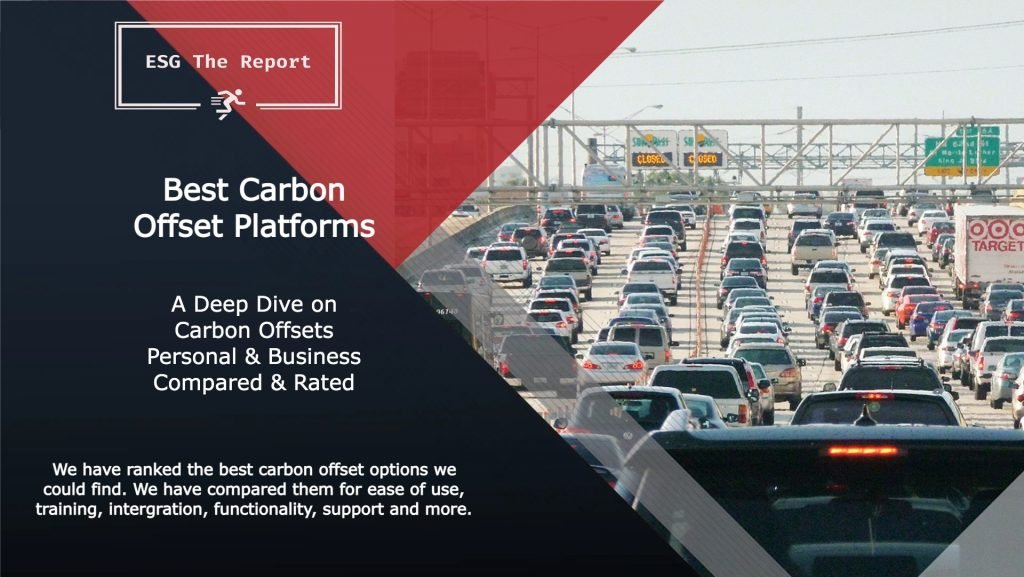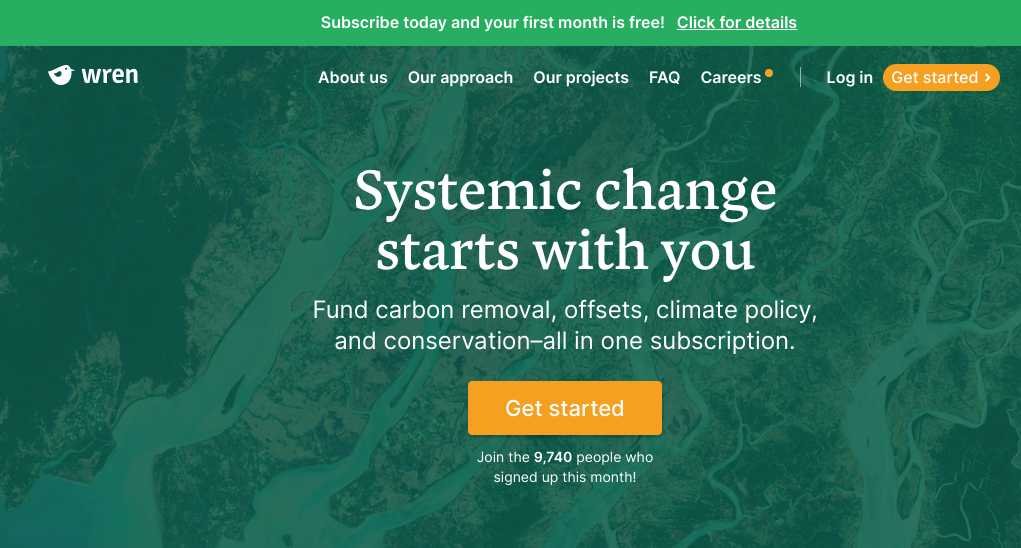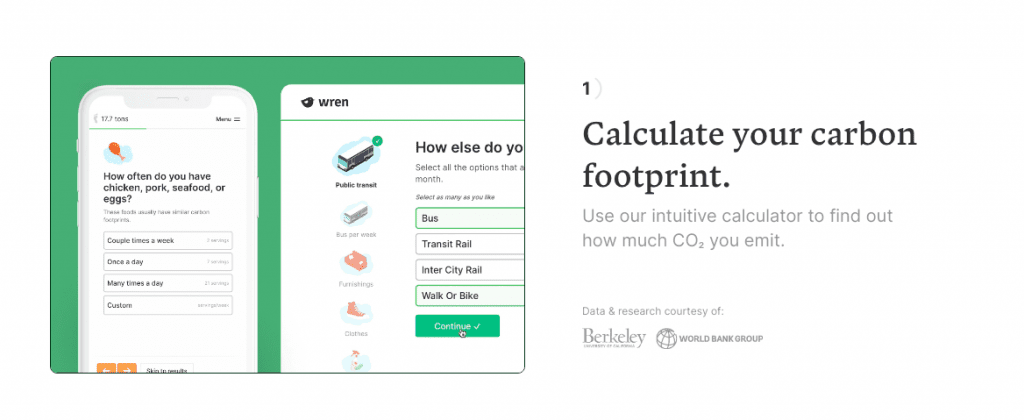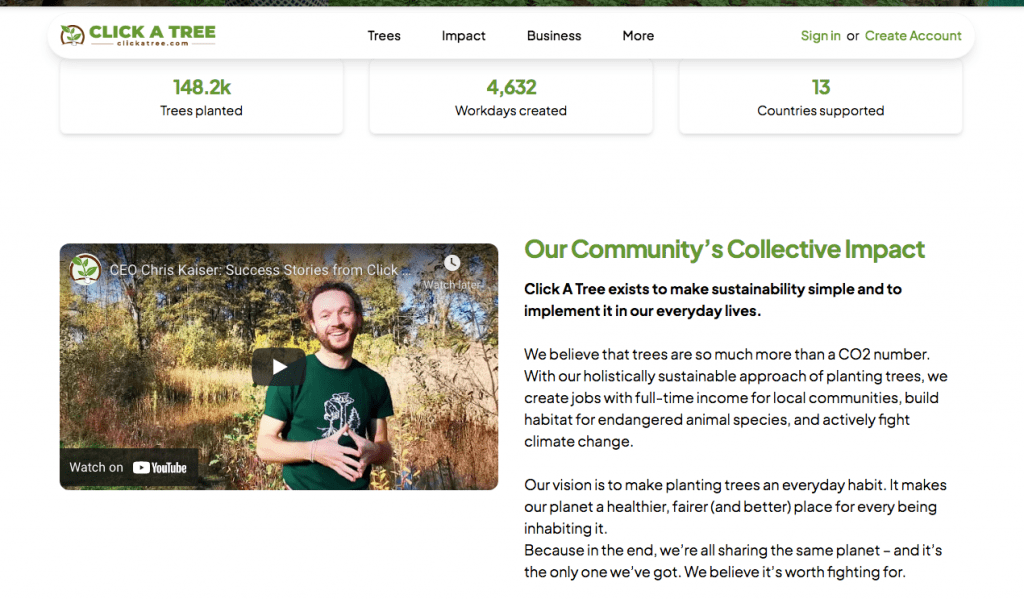Best Carbon Offset Trading Platforms
What are the Best Options to offset your carbon footprint?

Critics say that they are nothing more than a way to make people feel better about themselves without actually doing anything to address climate change. While they are not a panacea for our collective environmental shortcomings, they are the most important tool we have for creating awareness and making it easy for every one of us to take the first step in taking action. The benefits of investing in Verified Emission Reductions (VERs) for voluntary climate action include:
-
- They can help raise awareness about climate change and its impacts.
- They can create incentives for people to reduce their energy consumption.
- They can create incentives for businesses to invest in cleaner technologies.
- They can help offset the costs of climate change mitigation.
- They can help businesses and individuals reduce their carbon footprints.
- They can create jobs in the clean energy sector.
- They can be used to finance other environmental protection activities.
- They can help developing countries improve their energy security.
- They help reduce emissions of carbon dioxide and other greenhouse gases.
- They can generate revenue for projects that improve the environment.
- They can help offset the cost of climate change adaptation.
The Team at ESG | The Report is currently reviewing dozens of carbon trading platforms, which we will post right here on this page. So, if you want the scoop, then bookmark this page and check back regularly for the latest information.
Wren
Editors Choice for Best Overall Programs
Wren is a subscription service that allows users to fund programs like carbon offsets, carbon removal, carbon conservation, and climate policy. Over 10,000 people join Wren every month, and the company has raised over $2 million for projects, with contributions from over 200 thousand people. To date, Wren has offset 154 thousand tons of CO2. The company has a 4.9 rating on TrustPilot and is endorsed by famous organizations like Bloomberg, Forbes, Wired, and The New York Times.
Getting started with Wren is super easy. People can use the intuitive calculator to calculate their carbon emissions, choose which climate solutions they want to fund, and receive updates about the progress of their preferred programs. Wren selects and implements global climate programs based on factors such as the precise tracking of carbon offset in each project and regular updates about results. This allows people who use Wren to make a real impact in solving the global climate crisis. As of now, Wren has members in over 100 countries and their goal is to make climate action simple and effective for everyone who wants to contribute.
Key Features
- Calculate your carbon footprint tool.
- Carbon removal programs
- Carbon offsetting options
- Advocacy for climate policy and conservation
- Monthly subscriptions.
- See the impact you have made every month.
- Rigorous criteria for selecting a project.
Pricing
Use the intuitive calculator to calculate your own or household’s total carbon footprint, subscription plans are offered accordingly. For example, the subscription plans of an individual with 1.5 tons of CO₂ emissions per year will look like this:
- Climate starter at $2.19/month (offset 100% of emissions)
- Climate steward at $4.39/month (offset 200% of emissions)
- Climate Hero at $6.58/month (offset 300% of emissions)
Click A Tree

Click A Tree is an initiative that plants trees to fight climate change. The initiative started in Ghana, Thailand, and the Philippines and has since expanded to twelve countries on five continents. The main goal of Click A Tree is to make tree planting an everyday habit. Signup is easy and free, and there is no credit card or commitment needed. With a simple-to-use dashboard, Click A Tree makes it easy for everyone to make an impact. Some of the big names associated with Click A Tree include Allianz, Best Western Hotels, EY, Yogi Tea, and RBC Design. Not only does Click A Tree help the environment, but it also provides income for local communities and creates habitat for animals. So far, Click A Tree has planted over 1 million trees and this number is increasing rapidly.
Founded in 2012, Click A Tree has a twofold business model- individuals can go to the website and plant a tree, and businesses can tie any product sale with planting a tree. Customers have the option to agree to pay more for the purchase of a product if it means that a tree will be planted, but the business does not have to pay for the tree or follow up on the planting. The benefit for businesses is increased traffic and increased profits. If customers see a sign that says for every 1000 purchases, a tree will be planted, they are more likely to tell their friends and family members to also make a purchase from the business so that the tree is planted. As a result, Click A Tree is an effective way for businesses to increase their profits while also helping to improve the environment.
Key Features
- No credit card is required to sign up.
- No commitments asked.
- 1 million + trees planted.
- Help grow forests around the world.
Pricing
- Sign-up is free.
- Different projects are posted on the dashboard, individuals can fund projects according to their budgets.
- Businesses don’t have to pay or follow up, they can attach the sale of any product with their preferred plantation project, and the rest is taken care of by the Click A Tree team.
Arbor Day Foundation
The Arbor Day Foundation is a nonprofit organization that has been planting trees for the last 50 years. It is the largest member of this type of organization in the world. The foundation has distributed close to 500 million trees in over 50 countries. Its aim is to plant trees, educate people about the benefits of planting trees, and impact lives positively.
Trees are essential to life on Earth. They help to regulate the climate, provide habitat for wildlife, and purify the air we breathe. In recent years, the importance of trees has come into sharp focus as the world faces the twin challenges of climate change and biodiversity loss. Fortunately, there is a simple solution: planting more trees & the Arbor Day Foundation is at it.
Trees play a vital role in mitigating climate change by absorbing carbon dioxide from the atmosphere and releasing oxygen back into the air. They also help to regulate global temperatures by providing shade and evaporative cooling. In addition, trees help to combat soil erosion and support local ecosystems. By planting more trees, we can help to fight climate change, foster biodiversity, and improve communities. So let’s roll up our sleeves and get to work planting a better future for everyone. Your donations to the Arbor Day Foundation will help plant trees around the world.
Key Features
- 500 million trees distributed so far.
- A clear roadmap for the next 5 years.
- Non-profit education organization.
- 50 years of planting trees.
Pricing
- For a $15 annual membership, you get:
- 10 trees for free as a signup bonus.
- 33% discount on Tree Nursery.
- The Tree Book for free.
- Donate the amount you want.

Carbon Trading FAQ
What is meant by carbon trading?
Carbon trading is a form of financial transaction that involves the purchase and sale of carbon credits. This method of trade was developed to address climate change. Carbon credits are exchanged as a way to offset one’s greenhouse gas emissions by investing in projects that create clean energy, reduce emissions elsewhere, or support projects that offset carbon emissions.
What is the purpose of carbon trading?
The purpose of carbon trading is to create a financial incentive for businesses and individuals to reduce their emissions of greenhouse gases. By investing in projects that either create clean energy, or offset or reduce emissions, businesses and individuals can offset their own emissions and help to slow down climate change.
What are some of the benefits of carbon trading?
Some of the benefits of carbon trading include:
1. Reducing greenhouse gas emissions: By investing in projects that either create clean energy or reduce emissions, businesses and individuals can help to slow down climate change.
2. Creating financial incentives for businesses and individuals to reduce their emissions: Carbon trading creates a financial incentive for businesses and individuals to reduce their emissions of greenhouse gases.
3. Offsetting emissions: businesses and individuals can offset their own emissions by investing in projects that create clean energy or reduce emissions elsewhere.
What is a carbon footprint?
A carbon footprint is the total greenhouse gas (GHG) emissions caused by an individual, event, organization, service, or product, expressed as carbon dioxide equivalent.
The two types of carbon trading are:
1. Emissions trading: Emissions trading is a market-based approach to controlling pollution by providing economic incentives for achieving reductions in the emissions of pollutants.
2. Carbon offsetting: Carbon offsetting is a way to reduce your carbon footprint by compensating for your emissions with projects that reduce emissions elsewhere or create clean energy.
Both types of carbon trading can be used to reduce emissions and help fight climate change. Emissions trading is a market-based approach that uses economic incentives to achieve reductions in emissions, while carbon offsetting compensates for your emissions with projects that reduce emissions elsewhere or create clean energy.
What are carbon credits?
Carbon credits are units of measurement that represent the reduction of one metric ton of carbon dioxide equivalent emissions. Carbon credits can be traded in order to offset emissions and help fight climate change.
A carbon credit represents the reduction of one metric ton of carbon dioxide equivalent emissions, while a carbon offset represents the removal of one metric ton of carbon dioxide equivalent emissions. Carbon credits can be traded in order to offset emissions and help fight climate change.
How do I buy carbon credits?
You can purchase carbon credits through a broker or a carbon consulting firm. There are also online platforms that allow you to buy and trade carbon credits. You can find vetted brokers above.
What is the price of a carbon credit?
The price of a carbon credit depends on the market and the specific project that the credit represents. Carbon credits are typically priced in U.S. dollars per metric ton of carbon dioxide equivalent emissions.
But according to estimates, the current weighted carbon price is $34.99 (as of June 2021), which is up from around $20 near the end of 2020. Before December 2020, the IHS Markit Global Carbon Index calculation of carbon credit cost had not risen above $22.15.
What is carbon trading?
Carbon trading is a market-based approach to reducing GHG emissions. Carbon trading works by setting a limit or “cap” on the total amount of GHG emissions that can be emitted by a given company or country. Those who emit less than their assigned limit can sell, or “trade,” their excess credits to other companies or countries that have exceeded their limits. In this way, the total emissions are reduced without putting an undue burden on any one party.
What are some of the risks of carbon trading?
Some of the risks associated with carbon trading include:
1. Volatility: Carbon prices can be volatile, which can create risk for businesses and individuals that are invested in carbon credits.
2. Fraud: There have been instances of fraud associated with carbon trading, such as businesses selling fake carbon credits or claiming emissions reductions that have not actually been made.
3. Carbon leakage: Carbon leakage occurs when businesses relocate their operations to countries with less stringent emissions regulations in order to avoid having to purchase carbon credits. This can offset the emissions reductions achieved by businesses and individuals who are investing in carbon credits.
What are some of the challenges associated with carbon trading?
Some of the challenges associated with carbon trading include:
1. Measuring and verifying emissions reductions: In order for carbon trading to be effective, businesses and individuals need to be able to accurately measure and verify their emissions reductions.
2. Addressing carbon leakage: Carbon leakage needs to be addressed in order for carbon trading to be effective. Otherwise, businesses may simply relocate their operations to countries with less stringent emissions regulations.
3. Ensuring that investments in clean energy projects are actually effective: It is important to ensure that investments in clean energy projects are actually effective in order to make sure that carbon trading is having the desired effect of reducing emissions.
What are some of the criticisms of carbon trading?
Some of the criticisms of carbon trading include:
1. Carbon trading does not address the root causes of climate change, such as fossil fuel use and deforestation.
2. Carbon trading can create perverse incentives, such as businesses investing in activities that result in emissions reductions in one area but lead to increased emissions elsewhere.
3. Carbon trading can be complicated and difficult to monitor, which can make it difficult to ensure that it is having the desired effect of reducing emissions.
4. Carbon trading can result in carbon credits being traded among the same group of businesses, rather than between businesses and individuals: This can result in businesses simply buying and selling carbon credits without actually reducing their emissions.
We have covered many topics in the article including carbon trading platform, carbon credit trading platform, carbon offset platform, best carbon offset schemes, carbon offset ratings, carbon rating platform, offset platform, carbon offset projects, best carbon offset programs, and carbon offset program amongst others. We hope that you have found it useful and appreciate you stopping by. We wish you luck in your quest for sustainability, whether it is in your personal life, your business life, or through ESG investing. Remember, we are all in this together, truly.

AUTHOR BIO
Research & Curation
Dean Emerick is a curator on sustainability issues with ESG The Report, an online resource for SMEs and Investment professionals focusing on ESG principles. Their primary goal is to help middle-market companies automate Impact Reporting with ESG Software. Leveraging the power of AI, machine learning, and AWS to transition to a sustainable business model. Serving clients in the United States, Canada, UK, Europe, and the global community. If you want to get started, don’t forget to Get the Checklist! ✅


